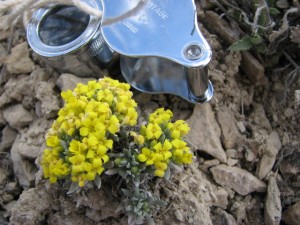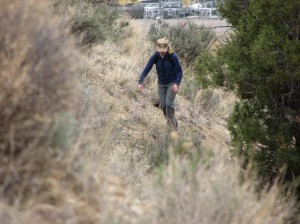Tiny Lesquerella in the Piceance Basin
 They may be tiny mustard plants but they have a huge impact in a region believed to contain one of the nation’s largest reservoirs of natural gas. Physaria congesta (Lesquerella congesta) and P. obcordata, both federally listed as Threatened under the National Endangered Species Act, are found right in the heart of all the activity associated with drilling for this oil and gas.
They may be tiny mustard plants but they have a huge impact in a region believed to contain one of the nation’s largest reservoirs of natural gas. Physaria congesta (Lesquerella congesta) and P. obcordata, both federally listed as Threatened under the National Endangered Species Act, are found right in the heart of all the activity associated with drilling for this oil and gas.
Denver Botanic Gardens is conducting a study on the genetic diversity of these two species. Both have very limited ranges and both are highly threatened by oil and gas development. Regulations are in place to protect these species from direct disturbance from oil and gas development. Indirect threats are harder to control. Pollinators essential for the survival of the plants could be affected by the roads, dust and chemicals used in drilling. Transporting the oil and gas back to a collection center creates large disturbances which become corridors for weeds and other threats to natural habitat.
Our study will examine how genetic diversity is distributed among the populations of each species. Greater genetic diversity allows a plant to cope with environmental variability. The results of this study will tell us the level of genetic diversity within each population and help guide conservation of this species by determining which populatio ns have the best chance of future success and focusing seed collection and conservation efforts on those.
ns have the best chance of future success and focusing seed collection and conservation efforts on those.
Add new comment